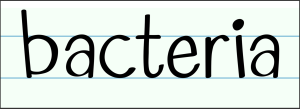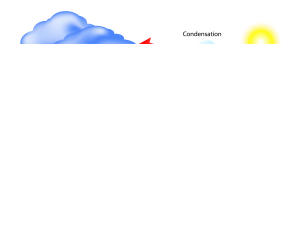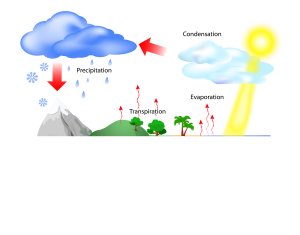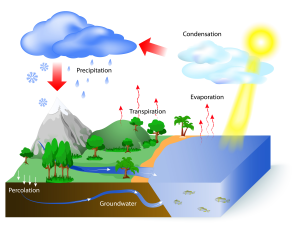STEM and ELT: How to Build Background and Prior Knowledge in STEM
Happy New Year! May 2022 bring you health, joy, and peace.
Sir Isaac Newton said it best: “If I have seen further, it is by standing upon the shoulders of giants.” I like to interpret this as meaning he gives credit for his successes by building upon his prior knowledge, which he learned from those before him. In other words, new learning is built on the foundation of previous learning. If building upon prior knowledge works for Sir Isaac Newton, imagine what it can do for struggling students and English learners!
True, building background knowledge and assessing prior knowledge are challenges for teachers who teach students whose first language is not English because the students come to classrooms with varying degrees of prior knowledge, academic experiences, and language proficiency, but it can still be done. Our English language students, regardless of prior knowledge and language proficiency, need activities that activate deep thinking and set the stage for the lesson that is to follow.
Here are three easy and effective strategies that you can use to build and assess your students’ background knowledge in STEM (science, technology, engineering, and mathematics) content classes. These strategies may still require scaffolds that align with the students’ level of language proficiency.
All lessons should begin with a warm-up activity that will:
- provide a way to assess prior knowledge for the lesson,
- be aligned to the unit, and
- get the students engaged and ready to learn.

It should be interactive and promote discourse or an action by the student to demonstrate or provide insight into what they know about the topic. One way to do this is to find an activity that you feel all students can relate to that aligns with the topic you will be teaching. For example, say that you will be teaching a lesson on the water cycle and you need to know if the students understand the following vocabulary words: evaporation, condensation, and precipitation. Here are two warm-up activity ideas for vocabulary assessment:
1. Picture-Word Match
This was one of my favorite activities that I used to use in the classroom. I would greet the students at the door and hand them an index card that either had a vocabulary word on the card, or a picture representation of a vocabulary word. The students had to move around the room and find the person who had a complement to their card (the vocabulary word to match the picture or vice-versa). When all the students found their match, they would have to discuss why they felt they were a pair.


Scaffold Idea 1: You may want to make sure that students whose language proficiency is Level 1 or 2 (newcomer/beginner) receive the picture card and that the student who has the vocabulary card has a higher level of language proficiency. If that person can also speak the same language as the beginner student, that would be ideal.
Scaffold Idea 2: Provide the students with sentence frames. For example, “my card is a picture of…”, “your card has the word ____, which matches my picture,” or “our pairs match because…”
While all of this is occurring, walk around the room listening to the students converse with each other while assessing their knowledge. This will help you know which students will need more scaffolds and assistance as you teach the lesson. Once the students have presented their matches to the class, you can project the correct answers on the board and review the vocabulary words that the students will be learning and how they will connect to the lesson that they will be learning. This is not the time to teach the vocabulary. This is just to let them know the objective and goals of the lesson/unit. Students should always know what they are expected to learn and the goals of the lesson.
2. The Slow Reveal—Notice and Wonder
This warm-up activity uses a picture that is slowly revealed to the students. It reminds me of a great math activity called 3-Act Tasks by Dan Meyers, where students are presented with information in three distinct parts. In this activity, the three parts are as follows:
- Part 1: Engaging and perplexing introduction
- Part 2: Additional information
- Part 3: The reveal of the solution
In the Slow Reveal—Notice and Wonder, a photo (in this example, an image of the water cycle) is revealed in three stages, with each stage revealing more of the photo. The students list or state things that they see and make predictions as to what it is. You list the student ideas on the board and use prompts or clarifying questions. On the final reveal, where the photo is fully shown, you could ask questions of the students, such as “who has seen this before?”, “what does it represent?”, and so on.
Allow the students to explain what they know about the picture/vocabulary words in small groups, then to the whole group, keeping in mind the characteristics of each level of language proficiency. Then, connects the picture to the unit and explain what they are going to be learning about (in this example, the water cycle, or how water continuously moves from the ground to the atmosphere and back again).

Picture 1: What do you notice?

Picture 2: What more do you see now? What do you think this is a picture of?

Picture 3: What is this? Have you seen this before? What questions do you have?
3. Pose, Pause, Pounce, Bounce
The third strategy is more about building background knowledge than assessing it. In this example, the unit is still on the water cycle, but the conversation is initiated using “rain” as the avenue to engage the students since most, if not all, kids have experienced rain. The dialogue can begin with one student but “bounce” to the other students in the class. “Bounce” means to take the statement of one student and select another student to elaborate on it or to add to what the previous student said. This type of questioning is called, Pose, Pause, Pounce, Bounce. Here is an example of how to use the 3rd strategy:
Teacher: So, have all of us have seen or felt rain? What about downpours?
Rafael: My family lived in the tropics. We would get a lot of rain. Sometimes there would be so much rain, it would look like rivers running down the streets.
Teacher: Has anyone else experienced this type of heavy rainfall? [Bounce this question to a specific student and listen to their response.] Bremen?
Bremen: Yes. I have also seen this, especially during a hurricane. There is a lot of rain and it is very scary.
Teacher: But after the downpour, does the rain remain on the streets and roads forever?
Lindsey: No. The the roads dry up.
Teacher: [Bounce to another student with a follow-up question] Pieter, do you notice this as well? Tell me what you notice when the roads dry up.
Pieter: I notice that when the sun comes up, the roads dry up faster than when there is no sun.
Teacher: Well, the drying up of the rain in science is called evaporation. Water never really goes away. Heat from the sun causes water to evaporate from oceans, lakes, streams, and even from the streets. Evaporation occurs when liquid water on Earth’s surface turns into water vapor in our atmosphere.
You can use this strategy when introducing the other phases of the water cycle as well. The key is to use something all students can relate to or have experienced in order to build background knowledge. The students will be more engaged if they can relate and even students at the lower levels of language proficiency can make a connection to the content.
What strategies do you use to build background knowledge or assess students’ prior knowledge?

About the author
Darlyne de Haan
Dr. Darlyne de Haan, a former forensic scientist and chemist with more than 20 years of experience in STEM, is a recipient and participant of the coveted Fulbright Administrator Program for Fulbright Leaders for Global Schools, a program sponsored by the U.S. Department of State's Bureau of Educational and Cultural Affairs. She is a strong advocate for changing the face of STEM to reflect the population and is fluent in English and advanced in Spanish.